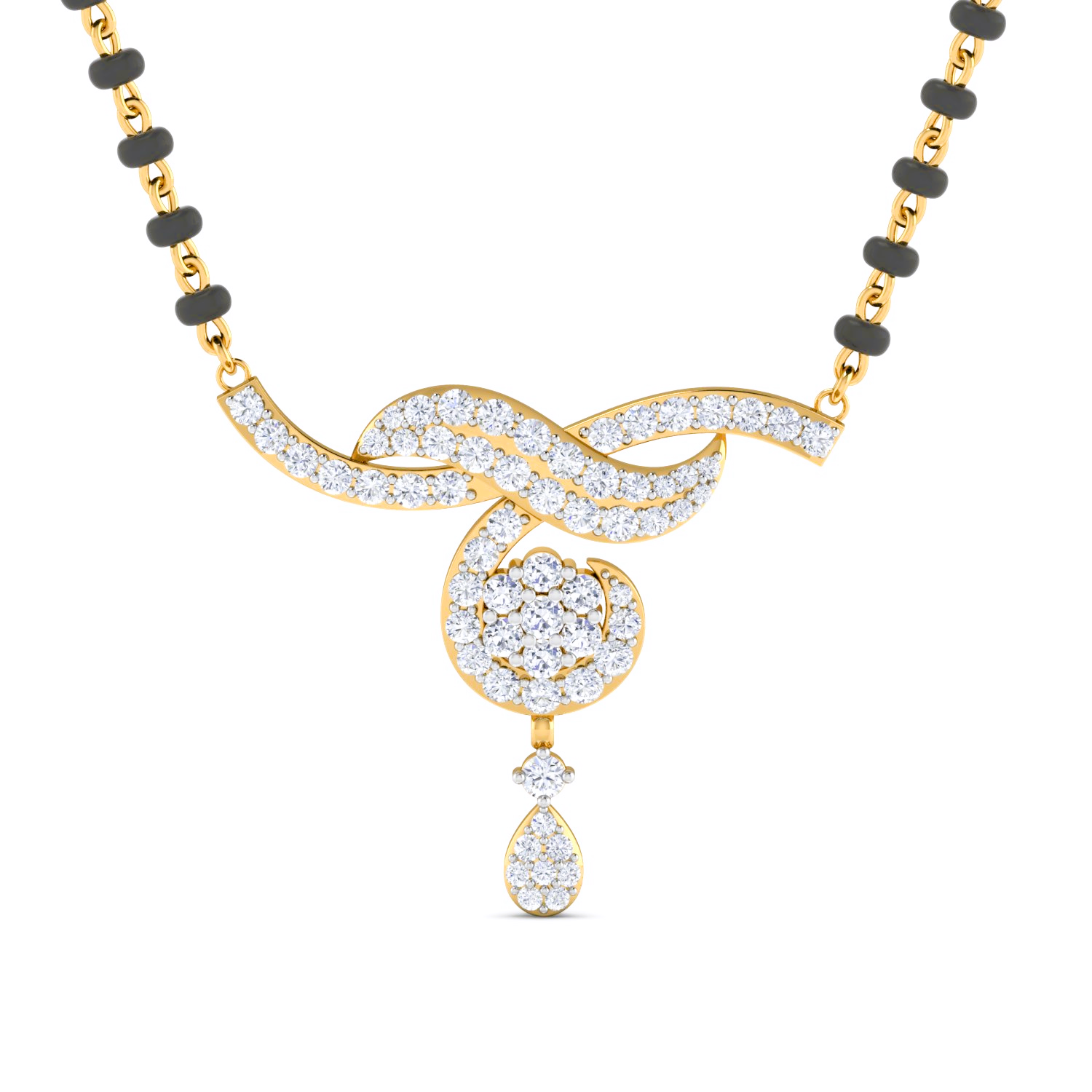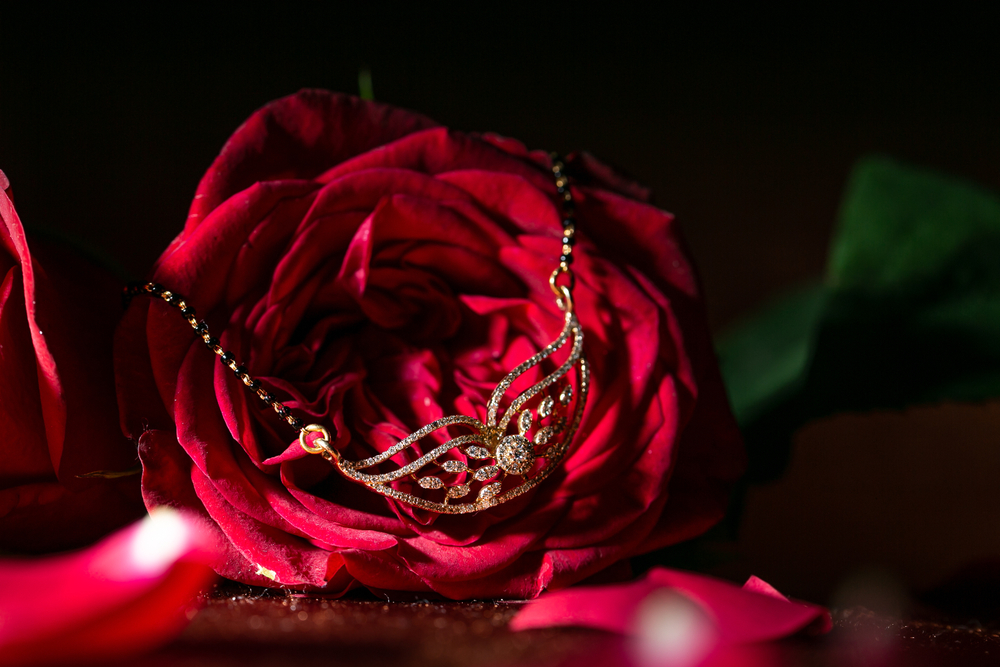Introduction
The mangal sutra is a significant symbol in Indian culture and Indian brides, representing the sacred bond of marriage. For Indian brides, this ornament is not merely a piece of jewellery; it embodies love, commitment, and the spiritual connection between husband and wife. Aarchievgold Jewellery, known for its exquisite craftsmanship and dedication to preserving traditional designs, offers a stunning collection of mangal sutras that blend cultural heritage with modern elegance. This cherished ornament holds a deep-rooted significance in Indian weddings, serving as a testament to the enduring spirit of marital commitment.
Its importance transcends generations, making it a cherished tradition in countless families, and it is often passed down as a family heirloom. The mangal sutra thus becomes not only a personal symbol but also a link to family history and values.
The Cultural Roots of the Mangal Sutra
Historical Origins
The term “mangal sutra” combines two Sanskrit words: “mangal,” meaning auspicious or blessed, and “sutra,” meaning thread. This sacred necklace has deep historical roots in Indian traditions, believed to have originated in South India. Traditionally, it consists of black beads strung together with gold threads, symbolizing the union of divine energies—Shiva (the husband) and Shakti (the wife). This rich history adds layers of meaning to the mangal sutra for Indian brides, who often view it as a vital part of their identity. Understanding its historical context enhances appreciation for this beautiful tradition.
Regional Variations
The design and significance of the mangal sutra vary across different cultures within India. In South India, it is often referred to as thali, featuring a long yellow thread with a pendant. In contrast, North Indian mangal sutras typically consist of black beads with various gold pendants known as Tasmania. Each region has its own unique customs surrounding the mangal sutra, reflecting the diversity of Indian bridal traditions and showcasing the beauty of cultural heritage that resonates with Indian brides. These regional variations not only highlight artistic differences but also tell stories of local customs and beliefs.

Symbolism and Spiritual Significance
A Symbol of Marital Commitment
For Indian brides, wearing a mangal sutra signifies their marital status and commitment to their husbands. The act of tying the mangal sutra during the wedding ceremony represents an eternal bond between the couple, symbolizing loyalty and devotion. This powerful symbolism reinforces the emotional connection that couples share throughout their married life, making it an essential aspect of their journey together. It serves as a daily reminder of their vows and promises made on their wedding day.
Spiritual Beliefs
In Hindu culture, the mangal sutra is believed to possess protective powers. It is thought to shield the bride from negative energies and evil spirits. The black beads are particularly significant as they are believed to absorb harmful vibrations. This spiritual aspect adds depth to its significance for Indian brides, who often view it as a source of strength in their marital journey and a means to ensure harmony in their household. Many believe that wearing it fosters peace and prosperity within their homes.
The Physical Attributes of a Mangal Sutra
Traditional Designs
Traditional mangal sutras typically feature two strings of black beads with a central pendant made of gold. The black beads are not only decorative but also serve a spiritual purpose by warding off negative energy. The intricate craftsmanship involved in creating these pieces reflects the artistry and skill passed down through generations, making each mangal sutra unique and special for every bride. These designs often incorporate symbols that hold personal or family significance.
Modern Interpretations
As times change, so do styles. Contemporary mangal sutras have evolved to include personalized designs that reflect modern aesthetics while retaining their cultural significance. Many Indian brides now opt for simpler, more elegant designs that can be worn daily without sacrificing tradition. This evolution allows women to express their unique identities while still honoring their cultural roots, creating a beautiful balance between past and present. These modern interpretations often feature innovative materials or minimalist designs that appeal to younger generations.
Rituals and Ceremonies Involving the Mangal Sutra
Wedding Ceremony Significance
The tying of the mangal sutra is one of the most crucial rituals in Hindu weddings. During this ceremony, the groom ties three knots in the mangal sutra around his bride’s neck, each knot representing loyalty to her husband, dedication to his family, and devotion to God. This ritual not only marks the beginning of their married life but also reinforces their commitment to each other in front of family and friends, solidifying their bond in a sacred manner. The act is filled with emotional weight, symbolizing unity and partnership.
Post-Wedding Rituals
After marriage, the mangal sutra continues to hold significance in daily life for Indian brides. It serves as a reminder of their marital vows and plays an essential role in various rituals and ceremonies throughout their lives. Many women wear it daily as a symbol of their commitment and protection, making it an inseparable part of their identity as wives while also connecting them to generations past. Its presence often brings comfort during challenging times by reminding them of their shared love.

The Mangal Sutra and Gender Roles
Reflecting social Norms
The mangal sutra is deeply intertwined with societal norms regarding marriage and gender roles in India. It symbolizes a woman’s identity within marriage; wearing it signifies her status as a married woman. This connection highlights how traditional practices influence perceptions of femininity and marital responsibilities for Indian brides, shaping societal expectations around them. The ornament serves as both an honor and a reminder of cultural duties.
Changing Perspectives
Modern interpretations of marriage are influencing how the mangal sutra is perceived. As gender roles evolve, many women view this ornament as a choice rather than an obligation. This shift reflects broader changes in societal attitudes toward marriage and women’s empowerment, encouraging Indian brides to redefine what this symbol means to them personally while fostering discussions about equality within relationships. Many women now choose designs that resonate with their individuality rather than conforming strictly to tradition.
The Mangal Sutra in Contemporary Society
Rise of Personalized Designs
With increasing numbers of working women, there has been a rise in personalized and designer mangal sutras that blend tradition with contemporary style. Many Indian brides now choose designs that resonate with their personal tastes while still honoring cultural significance. This trend showcases how modernity can coexist with tradition in meaningful ways that appeal to today’s brides. Personalized designs allow brides to incorporate elements that reflect their unique stories or family heritage.
Celebrating Diversity
The relevance of the mangal sutra extends beyond traditional marriages; it is also significant in interfaith and intercultural marriages. As society becomes more inclusive, many couples adopt this symbol to reflect their unique backgrounds while respecting its traditional roots. This adaptability highlights the mangal sutra’s enduring legacy as a representation of love that transcends cultural boundaries for all Indian brides. It fosters unity among diverse communities while celebrating individual identities.
Conclusion
The mangal sutra remains an integral part of Indian culture and tradition for Indian brides. Its rich history, deep symbolism, and evolving interpretations highlight its importance beyond mere decoration. As society changes, so does the understanding and significance of this sacred ornament—bridging generations while celebrating love and commitment in marriage. Whether through traditional designs or modern adaptations from brands like Aarchievgold Jewellery, the essence of the mangal sutra continues to grow as a powerful symbol of unity between partners in life while ensuring that each bride’s individual story is beautifully told through her choice of ornamentation. Its timeless relevance ensures that future generations will continue to cherish this beautiful tradition.
If you’re looking for a beautiful and meaningful mangal sutra that embodies both tradition and modern elegance, explore the exquisite collection at Aarchievgold Jewellers. Celebrate your love story with a piece that reflects your unique journey as an Indian bride!
FAQs
What is the significance of the mangal sutra to Indian brides?
The mangal sutra symbolizes the marital bond between husband and wife, representing love, commitment, and protection against negative energies.
How is a mangal sutra typically designed?
A typical mangal sutra consists of black beads strung together with gold threads, often featuring a pendant. The design can vary by region, with some incorporating additional elements like gold or personalized charms.
Why do Indian brides wear the mangal sutra during the wedding ceremony?
During the wedding ceremony, the groom ties the mangal sutra around the bride’s neck as a symbol of their union and commitment to each other.
Can modern brides personalize their mangal sutras?
Yes, many modern Indian brides choose to personalize their mangal sutras with unique designs, symbols, or gemstones that reflect their individual style while still honoring tradition.








